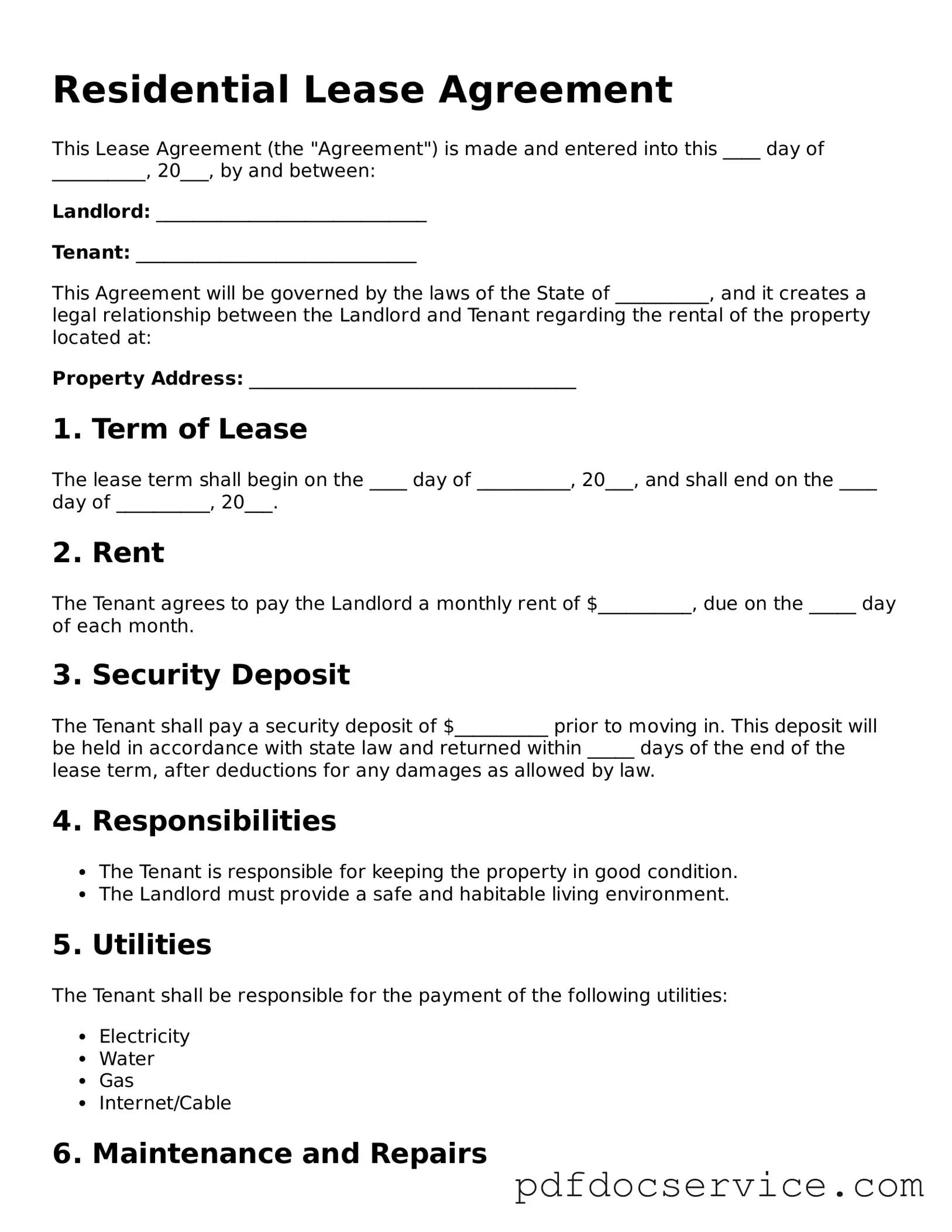What is a Lease Agreement?
A Lease Agreement is a legally binding document between a landlord and a tenant. It outlines the terms and conditions under which a tenant can occupy a property. This agreement typically includes details such as the rental amount, duration of the lease, and responsibilities of both parties.
What should be included in a Lease Agreement?
A comprehensive Lease Agreement should include the following elements:
-
Names of the landlord and tenant
-
Property address
-
Lease term (start and end dates)
-
Monthly rent amount
-
Security deposit details
-
Utilities and maintenance responsibilities
-
Rules and regulations for the property
-
Termination conditions
How long is a typical Lease Agreement?
Lease Agreements can vary in length. Common terms include:
-
12 months (most common)
-
6 months
-
Month-to-month agreements
The duration depends on the preferences of both the landlord and tenant.
What happens if I break the Lease Agreement?
Breaking a Lease Agreement can have consequences. Typically, tenants may face penalties such as:
-
Loss of security deposit
-
Liability for remaining rent until a new tenant is found
-
Potential legal action from the landlord
It is advisable to review the lease terms regarding early termination and communicate with the landlord to explore options.
Can a Lease Agreement be modified?
Yes, a Lease Agreement can be modified, but both parties must agree to the changes. It is best to document any amendments in writing and have both parties sign the revised agreement to ensure clarity and avoid disputes.
What is a security deposit?
A security deposit is a sum of money collected by the landlord to cover potential damages or unpaid rent. Typically, this deposit is refundable at the end of the lease term, provided the property is returned in good condition and all terms of the lease are met.
Are there any restrictions on pets in a Lease Agreement?
Many Lease Agreements include specific clauses regarding pets. These may range from:
-
Allowing pets with no restrictions
-
Allowing pets with a pet deposit
-
Prohibiting pets entirely
It is important to review the lease terms carefully if you have pets or plan to get one.
What should I do if I have a dispute with my landlord?
If a dispute arises, it is recommended to first communicate directly with the landlord. Document all interactions and agreements. If the issue remains unresolved, consider seeking mediation or legal advice to understand your options based on the lease terms.
Can a Lease Agreement be verbal?
While verbal agreements can exist, they are not recommended. A written Lease Agreement provides clear documentation of the terms and helps protect both parties. In many jurisdictions, a written lease is required for leases longer than a certain duration, often one year.
What are the consequences of not signing a Lease Agreement?
Not signing a Lease Agreement can lead to misunderstandings regarding rental terms and responsibilities. Without a signed document, a tenant may lack legal protections and could be at risk of eviction without notice. It is crucial to have a signed agreement to ensure both parties are aware of their rights and obligations.
